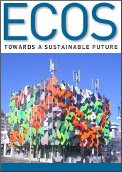
|
Published: 29 August 2011
New technologies to lighten the web’s energy load
The carbon footprint of the energy-intensive, high-speed telecommunications and computing technology at the core of the Internet is set to be sized down by a revolutionary new chip that uses little energy and operates at ultrafast speeds.

|
|
The core of the internet uses optical signals that exploit the capacity of light to transmit information at very high speeds. Credit: iStockphoto
|
The core of the internet uses optical signals that exploit the capacity of light to transmit information at very high speeds. Incorporating light onto silicon computer chips (which carry electronic signals) is critical to overcoming energy and bandwidth bottlenecks for on-chip and chip-to-chip communications.
To operate at very high data rates (160 gigabytes per second and higher), optical communications systems need to process signals in a way that will overcome opto-electronic conversion speed limitations.
An international team led by University of Sydney physicist Associate Professor David Moss developed a chip to meet this requirement, using sophisticated technology called Spectral Phase Interferometry for Direct Electric-Field Reconstruction, or SPIDER.
‘Using the SPIDER technology, applications such as telecommunications, high-precision broadband sensing and spectroscopy, metrology, molecular fingerprinting, optical clocks, and even attosecond physics are all set for a major speed upgrade,’ says Assoc. Prof. Moss.
He says the SPIDER chip will give all parts of the Internet, from long distance fibre-optic networks to silicon routing chips, the ability to measure state-of-the-art signals where the phase of light is used to encode information.
The SPIDER-based chip integrates with silicon computer chips and is even fabricated using the same methods, making it ideal for a range of photonic and electronic applications.
Assoc. Prof. Moss’s team is publishing a paper in Nature Photonics. In related work being published in the same journal, a team at Columbia Engineering School in the US has built optical nanostructures to engineer an ‘invisible’ material with zero refractive index.
All natural known materials have a positive refractive index, a measure of the speed of light within the material. By sculpturing ‘artificial subwavelength’ nanostructures, the Columbia researchers were able to control the light dispersion so that a negative refractive index appeared in the medium.
‘This is a big step forward in figuring out how to carry information on photonic chips without losing control of the phase of the light. We can now control the flow of light, the fastest thing known to us,’ said Team Leader Chee Wei Wong.
Source: University of Sydney, EurekAlert!



